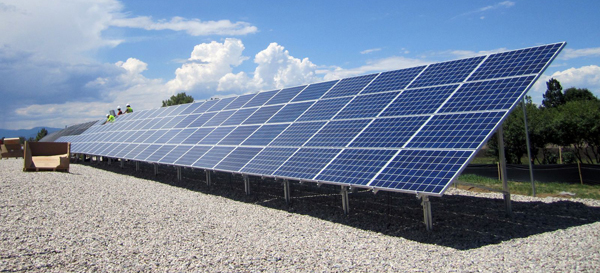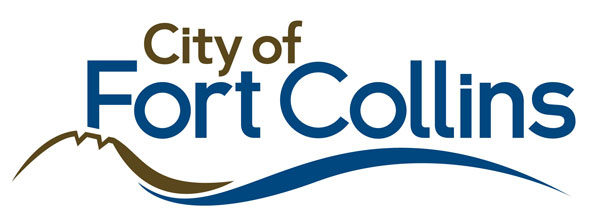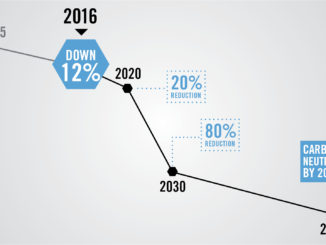

Resolution Highlights the Affordability of Renewable Energy and the Need to Reduce Greenhouse Gas Emissions From the Electricity Sector to Meet Existing Climate Action Goals
Nick Francis, Fort Collins, CO.
Fort Collins Partners for Clean Energy released a proposed resolution for the Fort Collins City Council to adopt the goal of achieving 100% renewable electricity by 2030.
The proposed resolution will be presented to the Fort Collins City Council for adoption May 1st.
The resolution recognizes bold steps the city has taken to address climate change, including the original Climate Action Plan (CAP) that was adopted in 1999, and recent market conditions that make achieving the 100% renewable electricity goal by 2030 more feasible. It highlights some delays in the efforts Fort Collins has made to reduce greenhouse gas emissions over the last decade, including the fact that the city is unlikely to meet the 32% reduction of GHG emissions by 2020 called for in its 2015 CAP Framework. The resolution provides context for the necessity of reliable, high-quality, and affordable energy to all residents and local businesses in Fort Collins, and states that many of the largest consumers in Fort Collins, such as CSU, have adopted similar 100% renewable electricity by 2030 goals.
In addition to the proposed resolution, the Fort Collins Partners for Clean Energy will submit recommendations to the Council regarding the logistics of achieving 100% renewable electricity in a way that is transparent, well-informed, and equitable.
Across the U.S, cities are moving towards economically-affordable renewable electricity. In Colorado, the cities of Aspen, Boulder, Pueblo, Breckenridge, Nederland, and most recently, Longmont, have made commitments to achieving 100% renewable electricity. “As an already nationally-recognized leader on climate change, Fort Collins should be the next city in Colorado to go 100% renewable,” says Sarah Snead of the Poudre Canyon Group Sierra Club.
In 2017, Xcel, the largest utility in the state, found that solar and wind power are significantly cheaper than any other form of new electricity in Colorado. The Platte River Power Authority (PRPA), the generating utility that serves Fort Collins, Longmont, Loveland and Estes Park, tripled the amount of wind power it put under contract last year after calculating that adding more wind will lower rates charged to member communities by up to 5%. “It’s just good business sense to invest in more renewable electricity today,” said Fred Kirsch, Executive Director of the Community for Sustainable Energy. “The new wind project PRPA is building will produce electricity at a cost lower than existing coal plants. Investing in renewables now will be good for our environment and good for the local economy.”
“With the help of the Fort Collins Sustainability Group, the City put into place ambitious greenhouse gas emission reduction goals as part of its Climate Action Plan” remarked Kevin Cross, spokesperson for the Fort Collins Sustainability Group. “Without setting a 100% renewable electricity by 2030 goal today, it will be difficult if not impossible for the City to meet existing climate action goals.”
Contacts:
Fred Kirsch, Community for Sustainable Energy, ph. 970-412-6295
Email: fred.cforse@gmail.com
Sarah Snead, Sierra Club, ph. 443-974-6291
Email: sarahesnead@gmail.com
Kevin Cross, Fort Collins Sustainability Group, ph. 970-484-3141
Email: jkevin87@comcast.net
Support Northern Colorado Journalism
Show your support for North Forty News by helping us produce more content. It's a kind and simple gesture that will help us continue to bring more content to you.
BONUS - Donors get a link in their receipt to sign up for our once-per-week instant text messaging alert. Get your e-copy of North Forty News the moment it is released!
Click to Donate



I find it incomprehensible that you continue to define wind and solar as “renewable” resources which can be used for energy production. At best, these are “incremental”, not “renewable”. The only mass resource available is hydroelectric, and where available, geothermal, available 24 hrs per day. Look it up, over 80% of renewable power available and currently in operation is from hydro, clean and with no production carbon footprint. Europe has figured this out; time for the US to get serious.